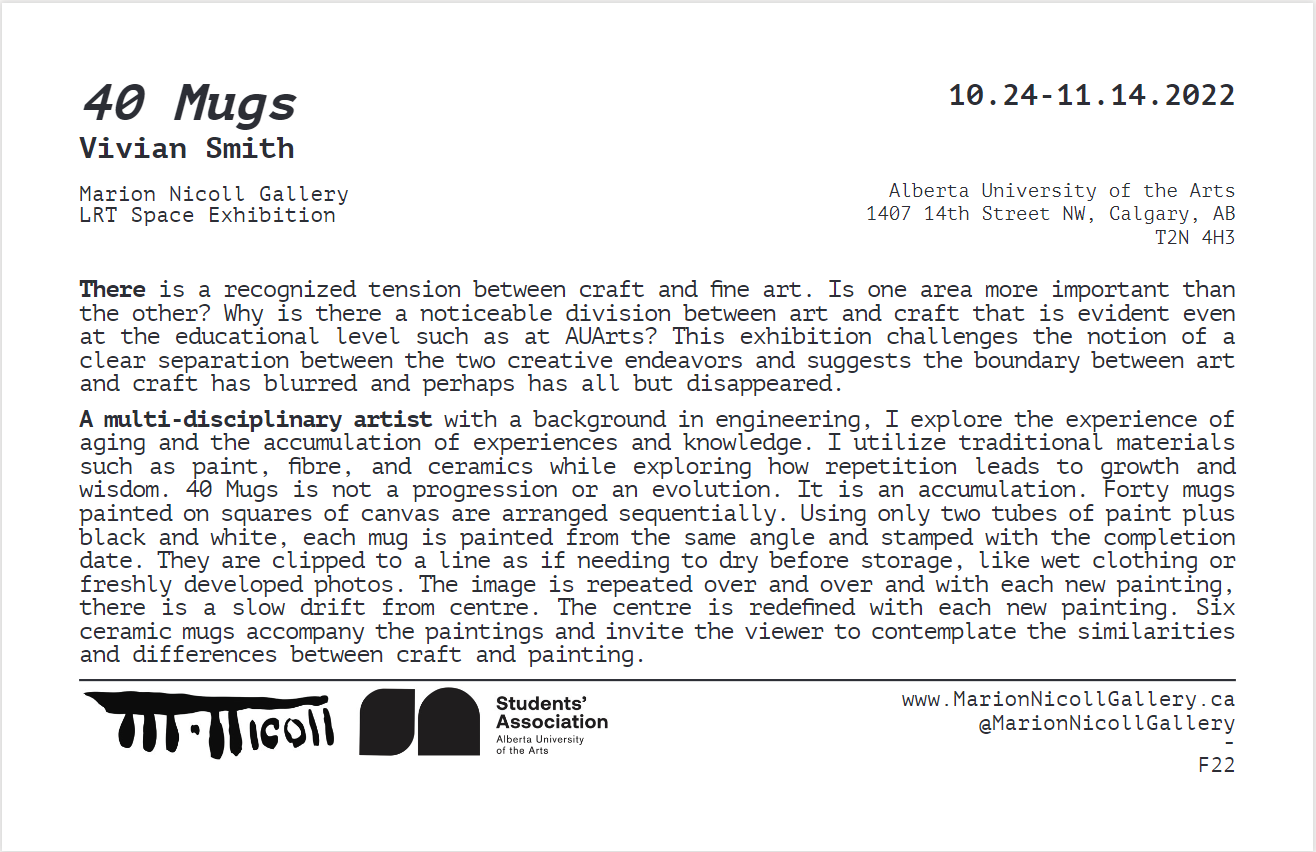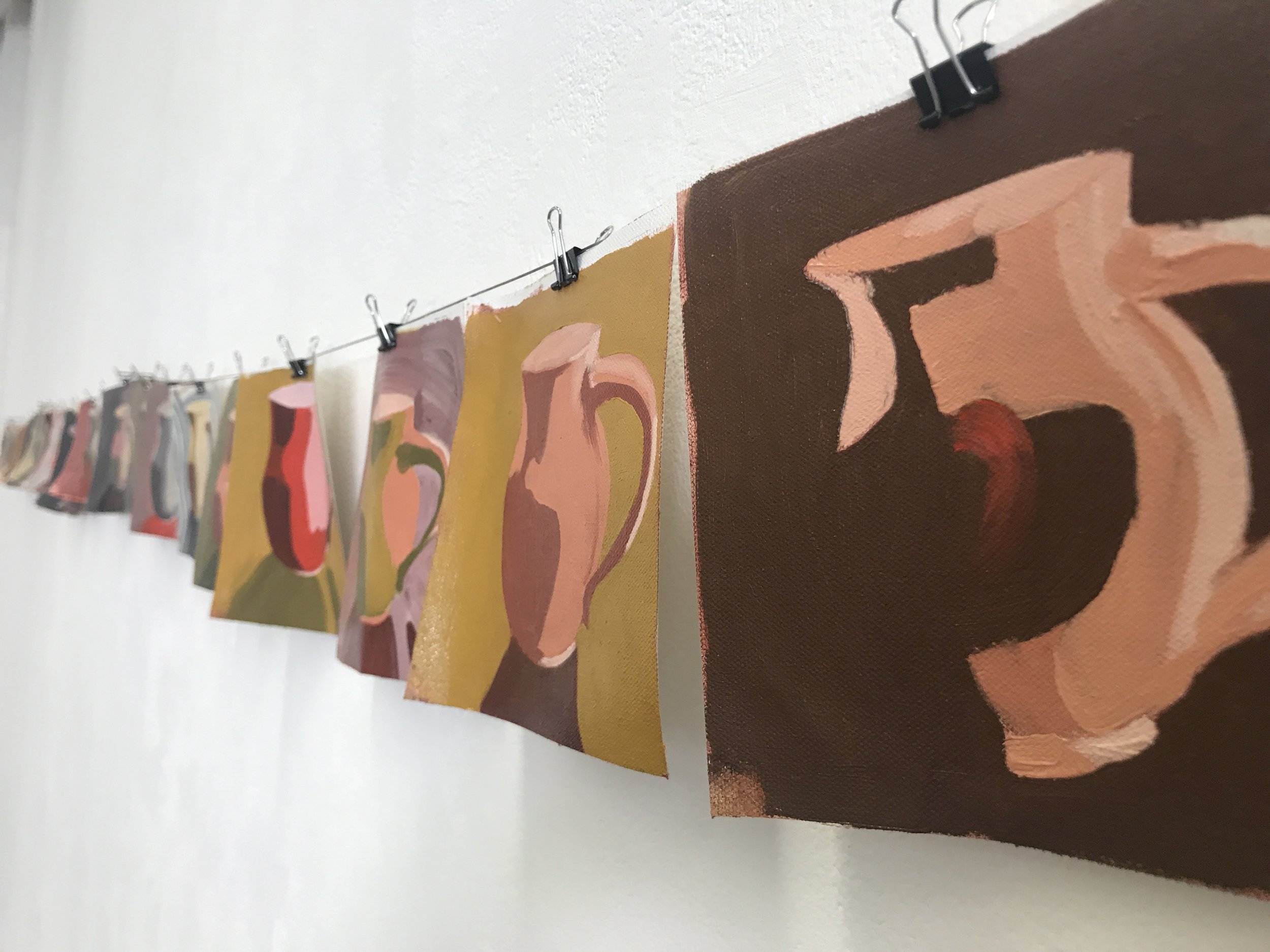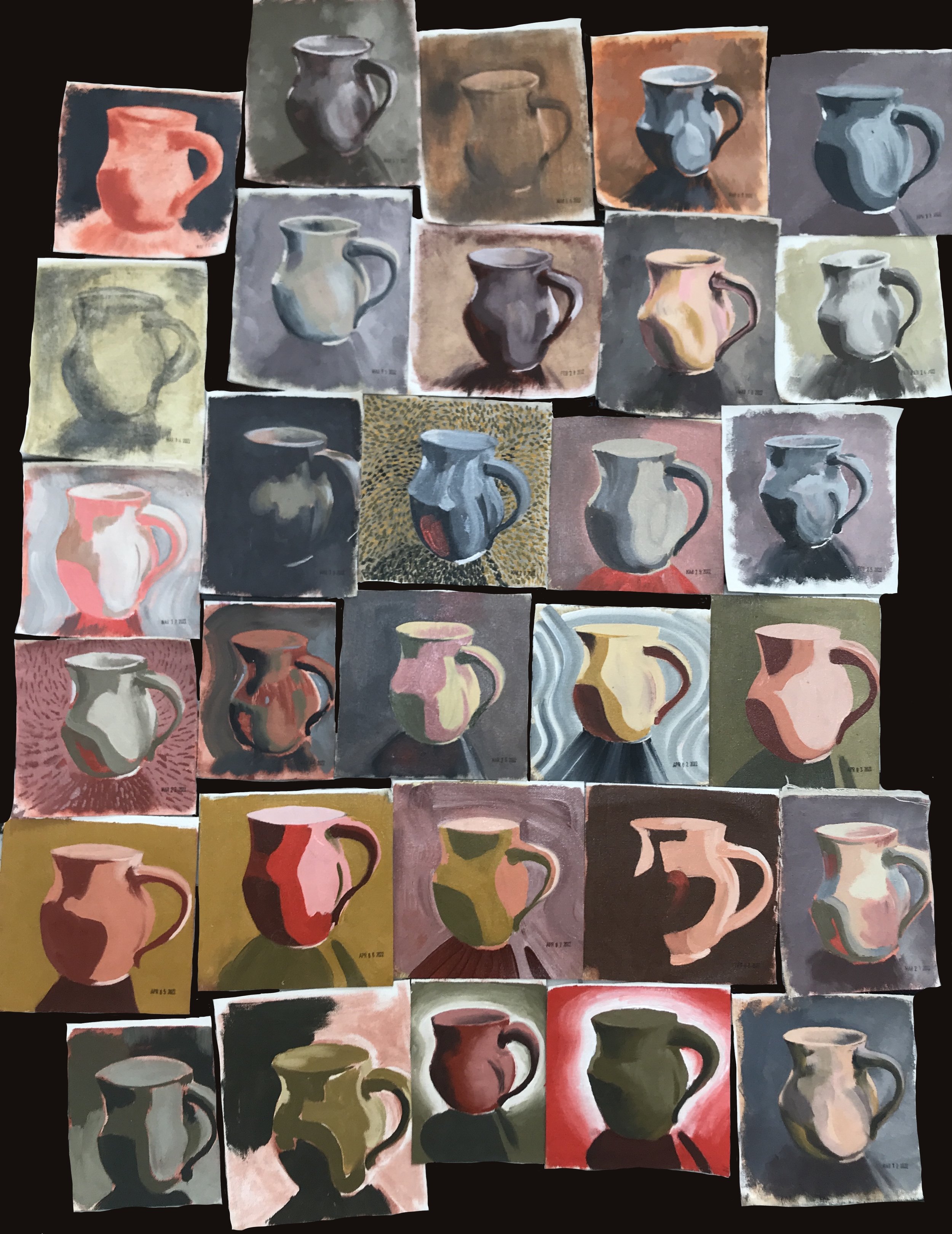Vivian Smith
/ 40 Mugs
10.24 /
11.14.2022


A multi-disciplinary artist with a background in engineering, I explore how repetition leads to growth and wisdom. I utilize traditional fine art materials such as paint, but also craft materials such as fibre and ceramics. There is a recognized tension between fine art and craft. Is one area more important than the other? Why is there a noticeable division between art and craft that is evident even at the educational level such as at AUArts? The first project assigned to third year ceramic majors is to make 40 mugs. The goal is to improve skill and technique. Repetition leads to improvements in ability and confidence. By mimicking the 40 mugs assignment with paint, I invite comparisons between the worlds of fine art and craft. Where do these two areas overlap? How are they the same? How do they differ? 40 Mugs challenges the notion of a clear separation between the two creative endeavors and suggests the boundary between fine art and craft has blurred and perhaps has all but disappeared.
01 - Artist Statement


02 - Exhibition Statement
There is a recognized tension between craft and fine art. Is one area more important than the other? Why is there a noticeable division between art and craft that is evident even at the educational level such as at AUArts? This exhibition challenges the notion of a clear separation between the two creative endeavors and suggests the boundary between art and craft has blurred and perhaps has all but disappeared. The first project assigned to third year ceramic majors is to make 40 mugs. The goal is to improve skill and technique. Repetition leads to improvements inability and confidence. By mimicking the 40 Mugs assignment with paint, I invite comparisons between the craft world and fine art. Where do these two areas overlap? How are they the same? How do they differ? When making a mug, the artist has only one tool and only one material at his/her disposal. The tool is the potter’s wheel, and the material is clay. Within this restrictive environment, almost any mug form is possible. Painting forty mugs leads to an accumulation of painting experience and knowledge.

The materials used for the paintings for the exhibition are also greatly restricted. Every mug is painted on approximately equal squares of pre-gessoed canvas and only two colours of paint were used (light cadmium red and yellow ochre) plus a black and white paint. Each mug was painted from the same viewpoint. The variability in colour, mood, light content, clarity, and style achievable within these limitations is unexpected and surprising; it is almost endless just as the variability within a mug form is almost limitless. Ceramic mugs are shaped directly by the artist’s hands. There is a close connection between the mug and artist. Within the proposed exhibition, each painted square will be suspended by a binder clip from wire as if it is still wet. This presentation approach suggests the artist’s hand recently touched the work. A connection between the paintings and the physical presence of the artist is maintained just as it is in ceramics.


